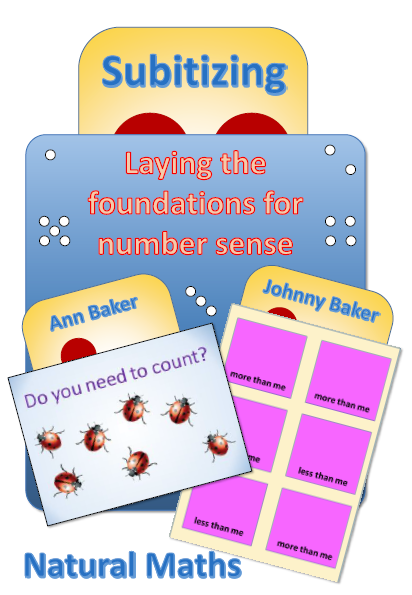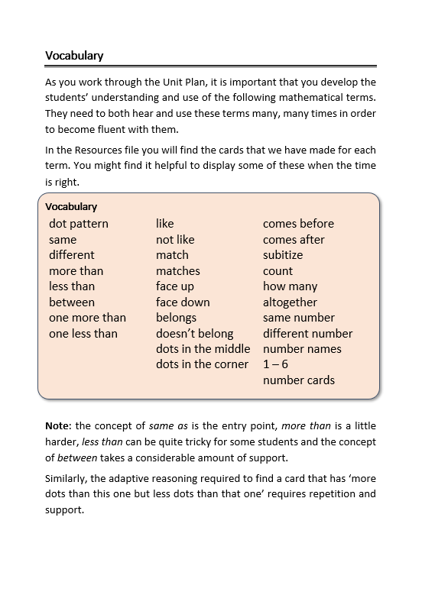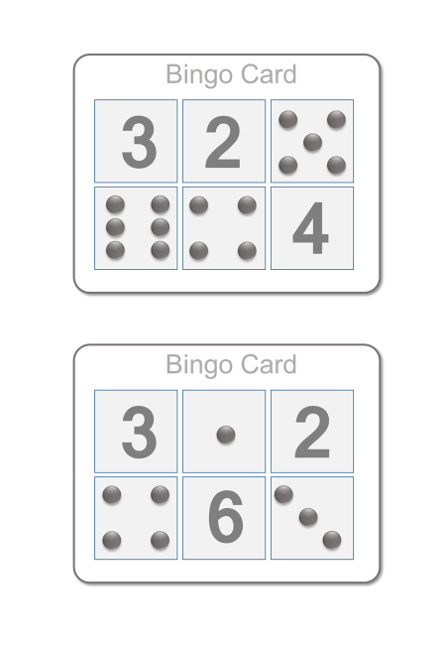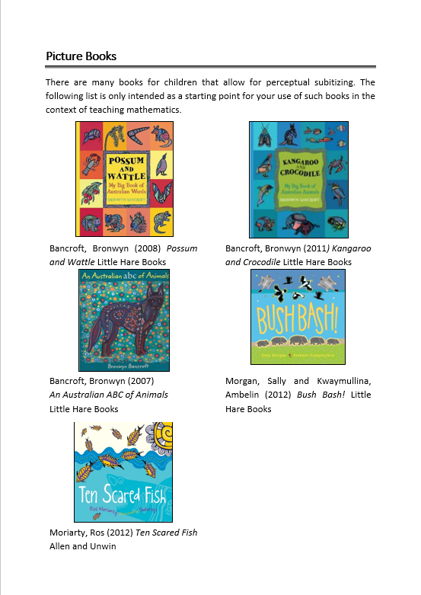Receive news, product launches and course info via subscribing to our mailing list here.
Subitizing: Laying the Foundations for Number Sense
Topic
Early Number
Grade Level
Foundation
Lesson Materials
2 Mental Routines
6 Strategy Lessons
3 Problematized Situations
6 Games
Resources
Compressed Zip File 8 MB
61 printable pages
4 FLASH programs
Select Licence:
This book has mental routines, strategy lessons, games and problematized situations to support the teaching of subitizing. It includes videos and FLASH programs as well as resources to make subitizing cards.
The theme for this book is:
In what ways does an emphasis on subitizing promote improved number sense and computation skill?
Much has been written about our innate ability to subitize, compare and quantify before we can even count and yet we gloss over this natural ability when laying down foundations for number sense. We know much about the brain and how it has evolved, certainly enough to implement a more brain based approach to number. And the following comments from Sousa suggest that the place to start is subitizing.
“The human brain is a five-star pattern recogniser.”
“The brain’s ability to detect patterns and make associations is one of its greatest strengths.”
Developmentally, children begin their mathematical journey by recognizing patterns within groups of objects and this process is named perceptual subitizing.
Perceptual subitizing refers to the ability to see a group of objects and to know without counting how many objects there are in the group. Dice and dominoes are examples of objects that rely on our ability to use perceptual subitizing.
The Australian Curriculum: Mathematics emphasizes the importance of subitizing in the Foundation Year and Subitizing: Laying the Foundations supports the teaching of ACMNA002, ACMNA003 and ACMNA004.
We have provided a sample from this material to give you a feel for this product. You can download the sample now:
We have also made the changeover from FLASH programs to HTML5 and the next link enables you to check out one of our all-time favourite apps in which you drag the mask down to slowly reveal the card that it hides and your class try to guess what the card is before you show all of it to them:
Similar ProductsYou may also be interested in...
This bundle includes the Visual Scaffolds for Mental Computation book and print resources to make dot and number cards.
This bundle includes the Conceptual Subitizing: Laying the Foundations for Number Sense book and print resources to make dot and number cards.






